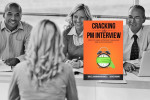Writing your value proposition

Value Prop – Create Powerful I3 Value Propositions to Enter and Win New Markets by Jose Palomino
There are a lot of great resources on-line for writing a value proposition, but I’ve only come across one book dedicated to the topic. Jose Palomino outlines his I3 framework in his brief book Value Prop and has some great prompters and suggestions for crafting your value proposition. He offers downloadable worksheets at his website valueprop.com.
He views value propositions as more than just a marketing exercise–he links it directly to sales effectiveness: “Complex sales are accomplished through one-on-one human communications, not brochures, websites, mission statements or any other marketing devices…So, your sales people need language and rationale to help them persuade other human beings that your value proposition addresses their primary needs and concerns.”
Palomino’s I3 framework breaks down into three parts:
- Innovation — what’s new?
- Indispensability — what’s useful?
- Inspiration — what’s wow?
A strong value proposition…is the basis from which you can develop a well-grounded marketing message that addresses the concerns of your specific customers within a target organization.
Palomino’s definition of a value proposition is: “A set of promises, based on capabilities and credibility of the offering party, that helps prospective customers understand how an offering uniquely addresses specific problems, opportunities, and challenges.”
One of the keys of developing a solid value proposition is getting a handle on your differentiating factor. Palomino points out that although there aren’t a lot of truly different offerings in the market, a good starting point for discovering differentiating attributes is to look across the entire value chain. Many companies, even those who deal in commodities, can offer value elsewhere in the value chain to differentiate their offerings. He references The Discipline of Market Leaders and suggests that looking at customer intimacy, product differentiation, and operational excellence are some good entry points for thinking about differentiation.
To begin the process of crafting your value proposition, Palomino recommends looking at all the assets at your disposal, unaddressed needs in the market place, and a competitive analysis. From there, you’re ready to begin a process of framing, refining, testing, supporting, and adjusting your value proposition (all based on the I3 framework).
The first step, framing, is done by filling out the I3 framework for your specific offering. Palomino is looking for the reaction: “I’ve never seen that before” for Innovation. For indispensability, he asks us to consider whether our product or service will be useful over the long term and whether it integrates well with the customer’s context and environment. With respect to Inspiration, he asks whether your product’s design is a “tipping point” for the purchase decision.
Next, refining the value proposition takes the form of “We offer our sports utility vehicle to outdoor enthusiasts delivering extreme terrain navigability through a built-in winch and hydraulic lifts.” Testing the statement through several iterations looks like:
- “Without our sports utility vehicle, the outdoor enthusiasts would not realize the ability to extract themselves from muddy terrain.”
- “The outdoor enthusiasts would not realize the ability to extract themselves from muddy terrain without our winches and hydraulic lifts.”
- “The outdoor enthusiast requires winches and hydraulic lifts.”
Testing also involves looking at the marketplace to understand your position relative to a competitor. Finally, he outlines how to position and simplify your offering.
Palomino concludes the book by observing that you can’t stop at a great value proposition–you have to extend it out to your sales cases. For him, the sales cases are: the business case, financial case, technical case, competitive case and decision process case. Weaving these together with the I3 framework provides sales teams with a clear conversational path to closing sales.








Olaf,
Thank you for taking the time to read and review my book. I appreciate the analysis and comments.
Best,
Jose